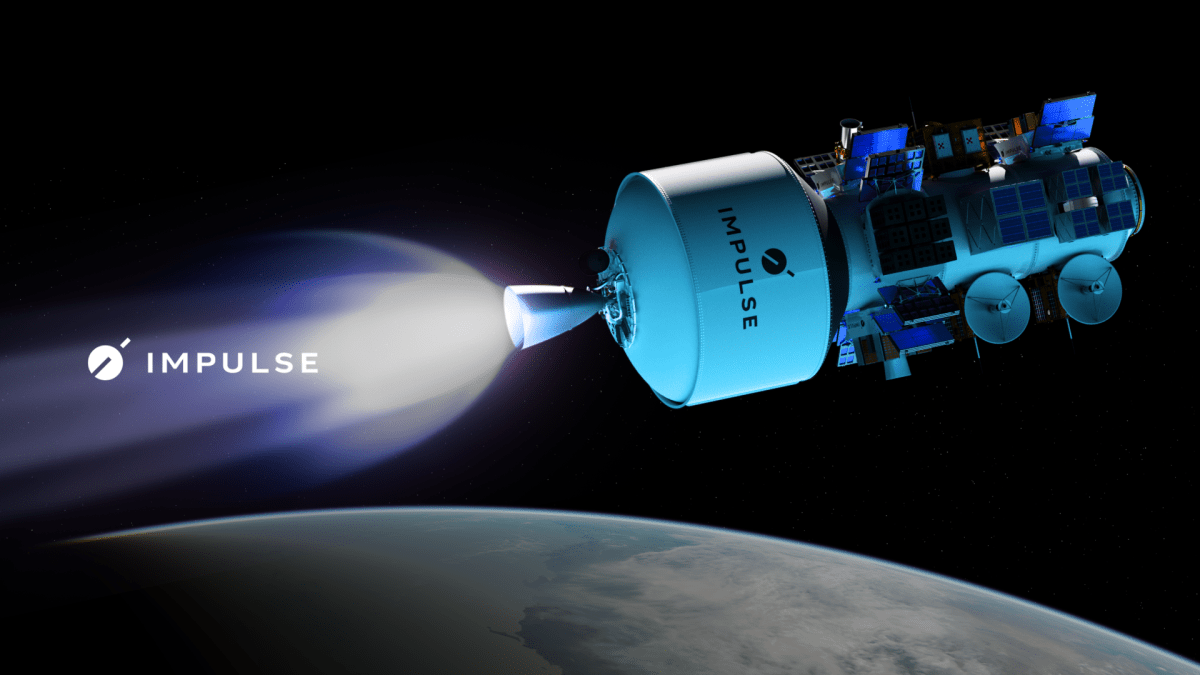LOGAN, Utah — Orbital transfer vehicle developer Impulse Space will offer rideshare services for spacecraft going to geostationary orbit using its Helios tug, along with an upgraded version of its Mira vehicle.
Impulse Space announced at the Small Satellite Conference that it is working with Exolaunch on its GEO Rideshare Program. The first mission is scheduled for 2027, using Impulse Space’s Helios vehicle on an undisclosed dedicated launch.
Impulse announced plans in January to develop Helios, a high-energy kick stage powered by liquid oxygen and methane propellants. The company billed Helios as a way to quickly transport satellites from low Earth orbit to GEO and other higher orbits, with the ability to carry satellites weighing up to 5,000 kilograms from LEO to GEO within a day.
Tom Mueller, founder and chief executive of Impulse Space, said in an interview that the company initially looked for larger GEO satellites for Helios. “But as we talked with customers, we saw that there are a lot of these half-ton to one-ton GEO satellites,” he said. Those satellites had limited options for getting to GEO, which led Impulse Space to pursue a rideshare initiative.
“We’re going to gauge the demand and see if it’s real,” he said ahead of a discussion Impulse Space hosted about the rideshare program at the conference. “We think there are a lot of companies looking at this.”
As part of the rideshare program, Helios will support multiple ports, each able to host at least 300 kilograms of payload, to take spacecraft to GEO. Exolaunch will market payload opportunities and provide deployment systems.
“Impulse’s introduction of the GEO Rideshare Program marks a transformative milestone for the satellite industry, making cost-effective and timely access to GEO a reality,” said Kier Fortier, vice president of global business development at Exolaunch, in a statement. The company has arranged rideshare launches for hundreds of smallsats, including a 16U cubesat delivered to GEO on a 2023 launch.
Impulse is pairing the GEO rideshare service it is offering using Helios with an upgraded version of its smaller Mira vehicle. That spacecraft flew for the first time in November 2023 on the SpaceX Transporter-9 rideshare mission, deploying a cubesat and conducting maneuvers in LEO before concluding its LEO Express mission in July. Those maneuvers included one where Mira raised its apogee by 150 kilometers in only 75 seconds.
Mueller said that the mission went well, other than problems with communications and software. “Even with the comms issues we had, we had a really great mission,” he said. Those problems have been corrected for the second Mira spacecraft that will launch on SpaceX’s Transporter-12 mission in the fall.
The upgraded version of Mira retains its propulsion system but features radiation hardening as well as an improved power supply an avionics. It will support a range of configurations for smallsats and hosted payloads, such as nine 16U cubesat dispensers.
Impulse Space envisions combining Mira with Helios, with Mira being deployed from Helios on GEO rideshare missions to then maneuver to desired orbits. The company cited rendezvous and proximity operations and space situational awareness as potential applications for Mira when used on GEO rideshare missions. With a full 300-kilogram payload, Mira will provide up to 500 meters per second of delta V, or change in velocity, increasing to as much as 1,200 meters per second with a minimal payload.
Impulse Space will use the upgraded Mira on LEO missions as well, with its first mission slated to launch in late 2025. Among the customers for Mira is in-space refueling company Orbit Fab, which will host a fuel depot on a Mira vehicle in 2026 as part of a mission to refuel the U.S. Space Force’s Tetra-5 satellite in GEO.
As it rolls out the upgraded Mira vehicle, Impulse Space is moving into development of Helios, including preparing to begin tests of the powerpack for the engine that will power the stage as well as working on tanks for the vehicle. Helios will also reuse avionics created for Mira.
“Last year was mostly about Mira and getting that LEO Express 1 mission up,” Mueller said. “This year is mostly about Helios.”
